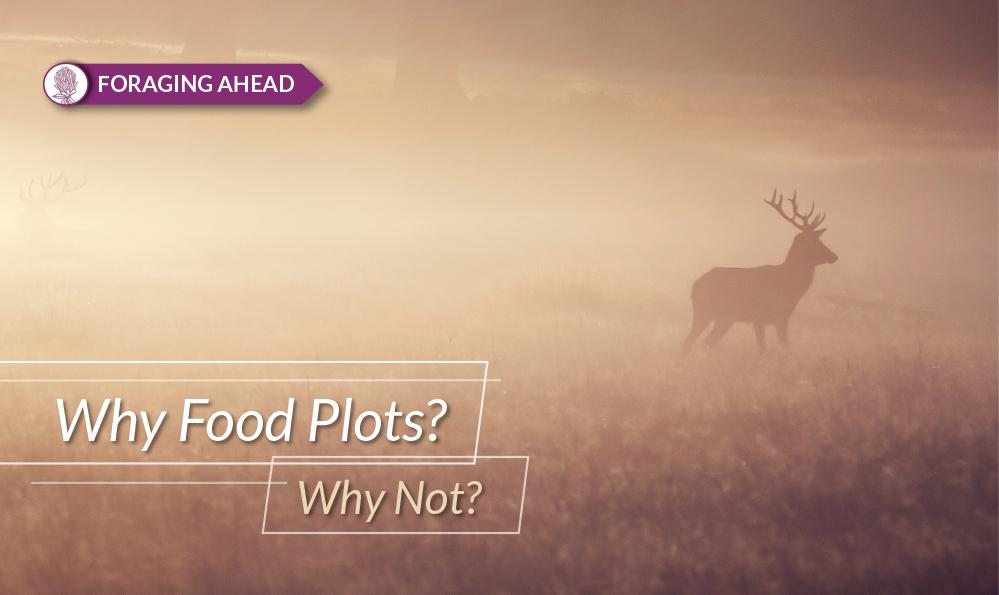
Most plant species used in wildlife plantings are forage crops. Not everyone who owns property is interested in enhancing wildlife, but the extent to which food plots have been planted for wildlife has increased dramatically during the past 20 years. What is the objective that wildlife enthusiasts have in mind by making such plantings?
Not surprisingly, different plants offer different benefits to various species of wild animals. Some are of much more value to some species than to others. There are a few specific reasons to plant specific plants for food plots.
Food plots influence animal behavior
The concept of attracting animals to increase the likelihood of hunting success is one of the main reasons for planting food plots. Also, food plots can help keep wild animals in an area where they are desired simply for the viewing enjoyment of a landowner. However, wildlife plots can sometimes even be used as a tool to encourage wild animals to stay away from areas where they are not wanted. For example, planting a forage crop that is highly attractive to deer a long way from a paved road may decrease the likelihood of collisions with motor vehicles.
Forage quality matters to wild animals

The nutritional benefits that forage crops provide to livestock are likewise of benefit to forage-consuming wild animals. Whitetail deer is the wild animal species for which plantings are most commonly made in the eastern United States; and knowledgeable wildlife managers who are interested in deer want to establish plants that produce forage with a high level of digestibility, a high protein content, and adequate amounts of minerals.
Food plots bridge nutritional gaps for wildlife
Bridging nutritional gaps is of critical importance in wildlife management. Having high-quality forage and/or an ample supply of seed available for wildlife over a long period of time is a major advantage. Ensuring that there will be food available during drought periods or other times when food is less readily available is especially important. Cool-season species are most commonly planted in food plots, but many wildlife managers realize that having high-quality forage available during summer and autumn helps ensure adequate milk production by does, increases the likelihood of rebreeding, increases deer weights prior to winter, and favors antler development.
Food plots aid nitrogen fixation
Wildlife managers value the fact that legumes can symbiotically fix nitrogen in association with Rhizobium bacteria. Appreciation of this unique trait of legumes is partly due to reduction or avoidance of the expense of applying nitrogen. In addition, omission of one or more applications of nitrogen is one less management practice to be remembered and accomplished.
Food plots act as insect attractants

Forage crops, especially forage legumes, often can be an excellent insectary. For many species of birds, including game birds such as quail and wild turkey, availability of a good supply of insects is of critical importance, especially when the birds are young. Many bird species also benefit from consuming high quality green leaf material.
Forage seed attracts wild birds

For many birds, including quail, doves, ducks, and wild turkey, seeds comprise an important part of the diet. The seed produced by some plants commonly grown for forage, including browntop millet, annual lespedeza, corn, and sorghum are of great value in wildlife plantings. Other seed-producing plants that are widely used to enhance bird populations or to attract birds for hunting purposes include sunflower, sesame, Florida beggarweed, ragweed, and proso millet. Plants such as partridge pea and shrub lespedeza are especially valued because the seed they produce do not weather easily and thus do not deteriorate very quickly over time.
Food plots provide cover for small animals
Although many native or indigenous plants provide cover for wildlife as well or better than many forage plants, this is another benefit that forage crops provide to wildlife. Forage plantings can be especially attractive to small animals like rabbits, and for young game birds including quail and wild turkey that simultaneously need cover as well as a high level of nutrition.
Why plant food plots? Why not?
There is much more to good wildlife management than just establishing food plots. However, forage crops and other plants established for wildlife can often help the manager of a property increase wildlife populations, improve animal health, and provide other benefits. In addition to the satisfaction that comes from accomplishing these objectives, many landowners enjoy the process of establishing, observing, and learning about wildlife food plots.
***
Foraging Ahead is a bi-weekly column presented by Ragan & Massey and written by Dr. Don Ball, Professor Emeritus at Auburn University. Dr. Ball is one of the authors of the popular book, “Southern Forages,” available here.
Follow Ragan & Massey!
Be sure to follow Ragan & Massey on Facebook and Twitter for daily updates, and check back here every week for more in-depth expertise, advice and product updates.
